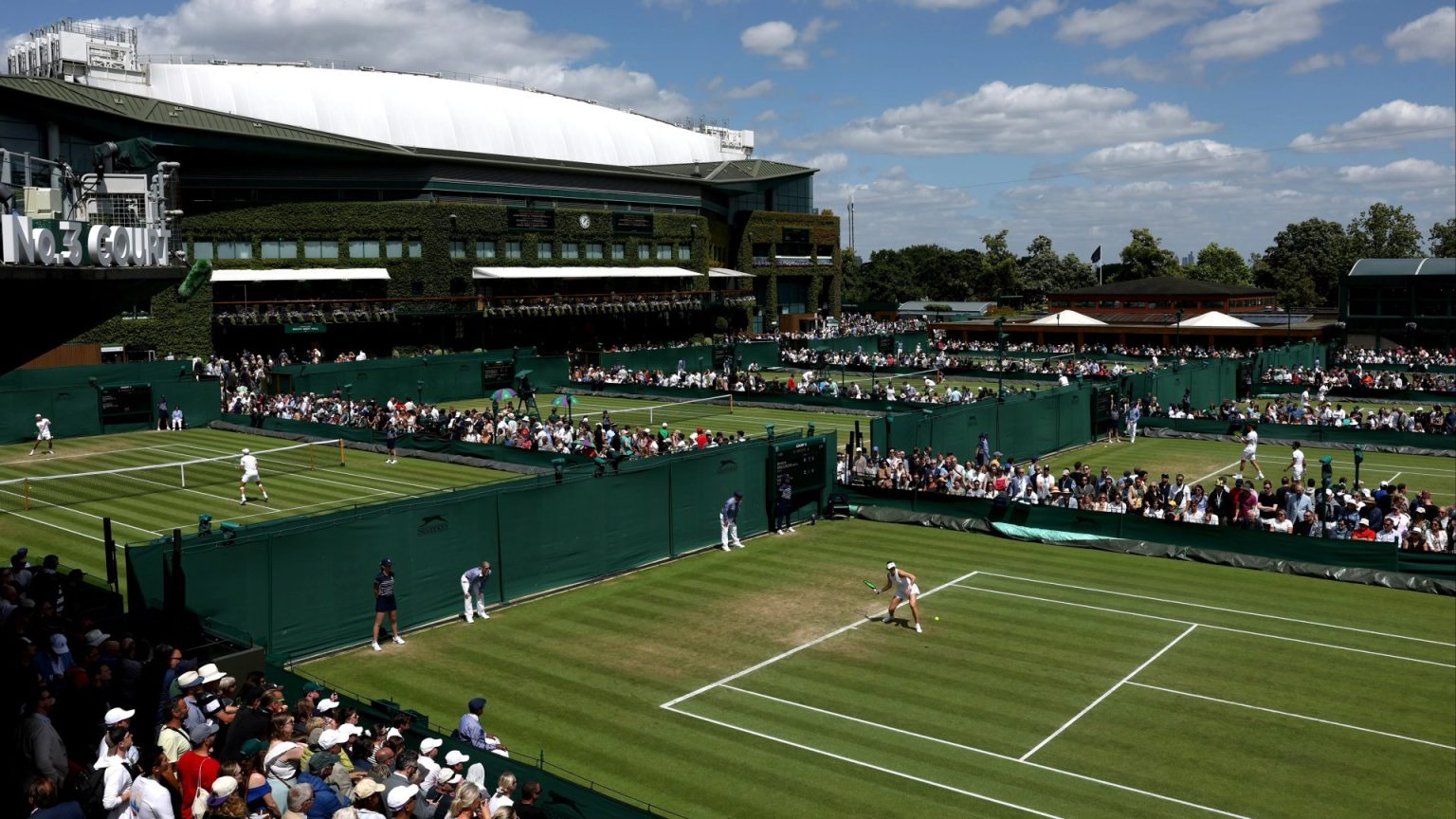Wimbledon, the prestigious tennis Grand Slam held annually in London, has decided to maintain its 14-day format, diverging from the other three major tournaments – the Australian Open, French Open, and US Open – which have all transitioned to 15-day schedules. This decision, driven primarily by the need to protect the delicate grass courts, underscores Wimbledon’s commitment to upholding its unique traditions and ensuring optimal playing conditions throughout the tournament. The extended playtime on Centre Court, already exceeding 80 hours over the 14-day period, coupled with the challenges posed by London’s unpredictable weather, makes a 15-day schedule impractical and potentially detrimental to the quality of the playing surface, especially as the tournament progresses towards the finals.
The All England Club, the governing body of Wimbledon, believes that the current 14-day format strikes the right balance between providing ample match time and preserving the integrity of the grass courts. The middle Sunday, traditionally a rest day, was eliminated in 2022, resulting in continuous play throughout the tournament. This change, deemed sufficient to accommodate the demands of a modern Grand Slam, alleviated some scheduling pressures without jeopardizing the playing surface. Extending the tournament by another day would significantly increase the wear and tear on the courts, potentially compromising the quality of play, particularly in the crucial latter stages of the tournament.
Further emphasizing the practicality of the existing schedule is the 11 pm curfew imposed on matches played under the roof on Centre Court. While seemingly restrictive, this curfew actually proves highly beneficial, preventing excessively late finishes that can disrupt player recovery and overall tournament logistics. Marathon matches extending into the early hours of the morning, common in other Grand Slams, are effectively avoided at Wimbledon, ensuring a more manageable schedule for players, officials, and spectators alike. The curfew, albeit unconventional, contributes to a smoother, more predictable tournament flow.
While other Grand Slams have embraced innovations such as courtside coaching pods, Wimbledon has refrained from implementing such changes due to spatial constraints, particularly on Centre Court. The introduction of these pods, which allow real-time communication between players and their coaches during matches, has been met with varying opinions across the tennis world. Wimbledon’s decision to forego these pods, however, stems primarily from logistical limitations rather than philosophical objections. The existing layout of Centre Court simply does not provide the necessary space to accommodate these additions without compromising the established infrastructure and sightlines.
One significant change being implemented at Wimbledon this year is the adoption of electronic line calling for all matches, replacing the traditional human line judges. This move aligns Wimbledon with the broader trend in professional tennis towards automated officiating, enhancing accuracy and consistency in line calls. While this decision represents a departure from a long-standing tradition, it is considered a necessary step to maintain pace with technological advancements in the sport. The All England Club acknowledges the impact of this change on the line judges, many of whom are part-time officials based in the UK, but believes that the benefits of electronic line calling outweigh the drawbacks.
The transition to electronic line calling, while beneficial for the accuracy and speed of the game, has raised concerns about the impact on the ecosystem of line judges, particularly in the UK. Many of these officials are part-time and rely on the opportunity to work at Wimbledon as a significant incentive. The removal of this opportunity could discourage aspiring officials and potentially disrupt the pathway for future umpires and referees. While Wimbledon acknowledges these concerns, the decision to embrace technology is seen as inevitable and necessary for the long-term development of the sport. The focus now shifts to exploring alternative avenues for developing and supporting aspiring tennis officials within the UK.
In summary, Wimbledon’s commitment to its 14-day format stems from a confluence of factors: the paramount importance of preserving the grass courts, the efficacy of the existing schedule, the practicalities of the 11 pm curfew, and spatial limitations on Centre Court. While embracing technological advancements like electronic line calling, Wimbledon remains steadfast in maintaining its unique traditions and ensuring the highest standards of play for the world’s premier grass-court tournament. This balanced approach, respecting tradition while adapting to modern demands, distinguishes Wimbledon from its counterparts and solidifies its position as a cornerstone of the tennis calendar.


